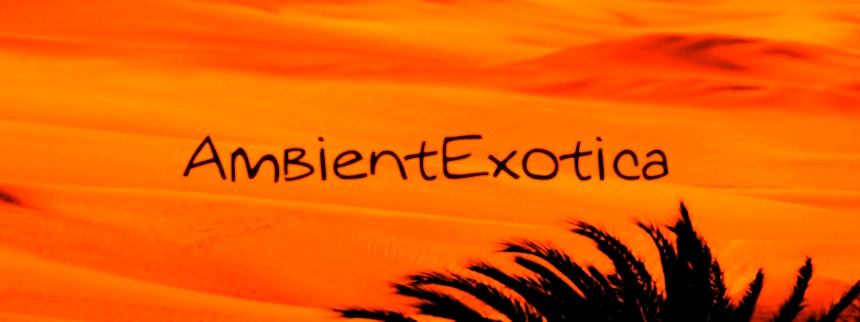
Les Paul
The New Sound
1950 / 1955
World-renowned luminary Les Paul (1915–2009) is not just a mere guitarist who manages to come up with a multi-track strategy in the studio in order to multiply his aural being and shoot coruscating guitar sparks all over the place, he is also a luthier and engineer. These well-known facts admittedly play less of a role in his later studio records where marketing departments, big bands and other people occasionally managed to dilute his signature sound. However, they are important constituents in the wake of the artist’s career, be it his pre-Exotica epitome Brazil (1948) that is recorded with his soon-to-be wife Mary Ford (1924–1977), or the increasingly self-assured opus The New Sound which showcases the artistic vision and diffusion much better, albeit in a less stable, more histrionic fashion.
Originally released in 1950 on Capitol Records on a 10" disc and subsequently reissued in 1955 with two bonus tracks, it is the latter version that is reviewed here. Les Paul’s 1950 release of The New Sound features an exclamation mark behind its title as well as a stylized version of the guitarist comprising five hands and the same amount of guitars in order to advise the eclectic – and often designedly hilarious – simultaneity of the events taking place in this overdubbed, multi-tracked, sine tone-filled, sped-up peritoneum of turbulent chord progressions. With anything else but a guitar – and one additional humane element in the form of an announcer in one instance – Les Paul unleashes a wondrous hydrazine-fueled firecracker that is inspected further below.
The arrangement that made Les Paul famous appears right at the opening spot… again: Brazil by Ary Barroso encapsulates the simultaneity of multitrack frenzy and dreamy backing chords best. Plinking shards, ligneous clicks and suntrapped gluons make this a crunchy ride, uplifting, pesky and mellow at the same time. Paul’s own Hip-Billy Boogie follows suit, placing scintillating ventricles over the style’s archetypal bass billows. The traditional Swiss Woodpecker meanwhile revs up the array of reels even more by augmenting the soundscape with twinkling glockenspiels, bonfire chords and – naturally – wooden pitch-shifted knocks. While Duke Ellington’s Caravan is the expected pulsatile ventiduct into saffron snake charmer deserts complete with recondite backing chords, accordion-like texturized glissando rivulets and Ragtime segues, Earl Burtnett’s and Adam Geibel’s Sleep is a partially Hawaiianized isle of languor with exclusively hammock-friendly timbres, orthogonal blebs and less interfering fields than usual, with Lady Of Spain by Tolchard Evans and Erell Reaves serving as the interim finale; a one-man marching band with a simulated guitar-driven fairground organ, sophistication is never ruled out on side A.
And what about side B? Obviously, Les Paul doesn’t let its superimposition tone down either: Lover by Lorenz Hart and Richard Rodgers sees overdubbed skylines hued in nocturnally annealed stars and rural lands before a mightily zoetropic whirlwind of flaring guitar protrusions swirl hectically downwards in helicoidal movements – what a change of style! Gaston Lyle’s and George Leybourne’s subsequent Man On The Flying Trapeze is a crazy antic in 3/4 time that is even presented by a suave announcer. Featuring sine tones and aquatic splashes, it is almost beyond belief that no barrel organ is featured in this centrifugal tent.
Afterwards, Gus Edwards’ and Edward Madden’s By The Light Of The Silvery Moon stops the comic relief for a moment so that it doesn’t become an anathema. In lieu of tongue-in-cheek deliveries, a heavily slowed down Arizona-compatible porch song is dropped. Mercilessly prolonged and mellow, it turns out to be the black sheep of the record, as it is a way too tame and boring. It’s up to the last three tracks to amplify the Space-Age weirdness once more: Cole Porter’s What Is This Thing Called Love is a gypsyfied lariat of polyfoil high-rise glints, pithy earthbound interstices and bass guitar goodness, all the while Felix Arndt’s Nola is entrapped in a transmogrified state of silver-argentine wisp reflections in a swinging hall of mirrors before Ray Charles’s South comes to the rescue with its sun-soaked guitar granuloma presented in normal speed, therefore astutely painting Kansas wheat fields in torrid heat as the last multiplex of overdubbing.
Les Paul’s The New Sound may have lost its former exclamation mark in the 1955 reissue already, but it sure hits the art house spot humongous decades later when the technical awe of late 60’s Dub experiments is channeled through a half-artistic pipeline that leads to the homes of bedroom producers and guitarists all around the world. You can achieve all of Les Paul’s textural goodness with an audio application or sound library of your choice, but the true level of labyrinthine convolution cannot be repeated anymore in view to the endless flood of convenient frequency benders, audio annealers and omniscient oscillators.
The New Sound can serve as a sound study alright, an artifact of an adorably crazy guitarist who broke the boundaries at the very beginning of the Space-Age, paving the ways – no matter how small or serpentine – for multitrack records such as Danny & Dena Guglielmi’s Adventure In Sound (1956) or Attilio "Art" Mineo’s Man In Space With Sound (1959), keeping in mind that this is the merest tip of the iceberg with a purposefully narrowed field of vision. After all, Les Paul has impressed musicians and artists of many genres, arts and ways of life. The New Sound doesn’t hit the spot in our excessively exuberant society anymore, but it enshrines some great hooks, faux-tipsy melodies and an awe-inspiring precision which keeps the various reels both in sync and in check. As a classic, it is available in a remastered state on all physical and digital formats.
Exotica Review 467: Les Paul – The New Sound (1955). Originally published on Mar. 25, 2016 at AmbientExotica.com.
